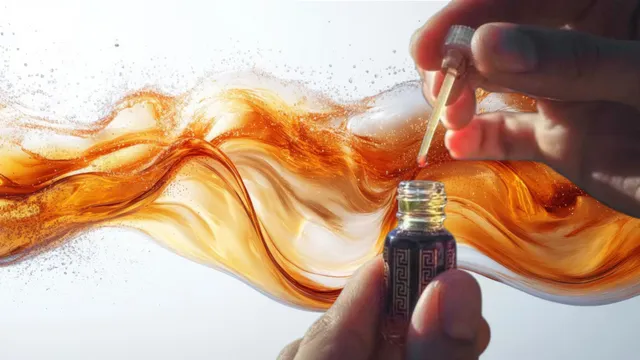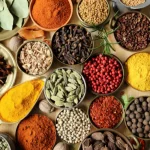Exploring the History of Indian Perfumes and Attars

Indian perfumes and attars have a rich history that dates back centuries, intertwined with the country’s royal courts, religious rituals, and cultural practices. Known for their distinct natural scents, these fragrances have been crafted using traditional methods passed down through generations. From the fragrant oils used in ancient temples to the luxurious perfumes enjoyed by emperors, Indian perfumes hold a significant place in the country’s history and continue to influence global fragrance trends today.
The Origins of Indian Perfumes
The art of perfume-making in India dates back to antiquity, with references to aromatic substances found in ancient texts such as the Vedas and Ayurveda. In these early texts, fragrances were not only valued for their pleasant aromas but also for their medicinal properties. Many perfumes and scented oils were used for religious ceremonies, where incense and attars played an essential role in enhancing the spiritual atmosphere. The concept of fragrances in Indian culture is closely linked with the idea of purity, divinity, and well-being.
The use of perfume-making began to flourish under the Mughal Empire, during which time emperors and royalty developed a deep appreciation for luxurious fragrances. The Mughals brought with them a variety of exotic plants and floral extracts that contributed to the evolution of the perfume industry in India. Rose, jasmine, sandalwood, and oud became key ingredients in the making of attars, and the art of perfumery reached new heights of sophistication.
The Role of Attars in Indian Culture
Attars, traditional Indian perfumes made from natural ingredients such as flowers, herbs, spices, and essential oils, are still highly regarded today. Unlike modern alcohol-based perfumes, attars are crafted using a natural distillation process that preserves the essence of flowers and plants. The making of attars involves the slow and careful extraction of fragrant oils through a method known as “hydro-distillation,” where the plant matter is steam-distilled in copper vessels to create rich, concentrated oils.
Attars are integral to many aspects of Indian life, from personal use to religious and cultural rituals. In Hinduism and Islam, perfumes are often used for ceremonial purposes, such as adorning statues or offering to deities. The use of attars is also common in weddings and festivals, where the fragrance is believed to bring blessings and prosperity. Additionally, these natural perfumes are associated with wellness, as many believe they have therapeutic properties, promoting relaxation and mental clarity.
The Luxury of Indian Royalty and the Mughal Influence
The Mughal emperors had a profound impact on the perfume culture in India. Known for their opulence and love for fine fragrances, the Mughals developed a strong tradition of perfume-making that included the use of rare ingredients like rose petals, jasmine, and sandalwood. The royal court would often have large, ornate perfume boxes, with attars presented as precious gifts. The emperors themselves were known to wear custom-made perfumes and use them in their baths, rituals, and social gatherings.
The famed Mughal gardens, with their carefully designed layouts, were not only a feast for the eyes but also for the nose, as the air was often filled with the scent of blooming flowers, many of which were used in the creation of attars. This luxurious relationship with scent extended to the courts, where perfumed oils were not only an accessory but also a sign of nobility and high status.
Modern-Day Indian Perfumes and Global Influence
Today, India’s perfume industry continues to thrive, with both traditional attars and modern perfumes being produced and exported worldwide. The global fascination with Indian fragrances has resulted in a growing demand for high-quality natural perfumes, especially in the luxury market. International perfume houses are increasingly sourcing ingredients such as oud and rose from India, recognizing the country as a hub of unique and high-quality scents.
Indian perfumery also enjoys a reputation for blending traditional knowledge with contemporary innovations. Modern-day perfumers are experimenting with both ancient ingredients and new techniques to create fragrances that appeal to a global audience. As a result, Indian fragrances are now seen not only as a cultural artifact but also as an integral part of the global perfume industry.
Challenges and Sustainability in Perfume-Making
Despite its rich history, the Indian perfume industry faces challenges, particularly regarding sustainability and the preservation of natural resources. Many of the flowers and plants used in the creation of attars, such as jasmine and rose, are vulnerable to over-harvesting and environmental degradation. The rise in demand for natural ingredients has put pressure on these resources, calling for more sustainable practices in the production of attars and perfumes.
Efforts are being made to address these concerns by promoting the cultivation of sustainable, organic flowers and plants, as well as educating consumers and producers about the importance of eco-friendly practices. The future of Indian perfumery lies in balancing the preservation of traditions with the need for environmental responsibility.
Conclusion
Indian perfumes, especially attars, represent more than just fragrances; they embody centuries of cultural history, spiritual significance, and artistry. From their use in ancient rituals to their presence in the royal courts of the Mughals, attars have remained an important part of Indian heritage. Today, as Indian perfumes continue to captivate the global market, they carry with them the legacy of India’s deep connection to nature and its appreciation for the finer things in life. As the world increasingly values sustainability, the future of Indian perfumes lies in preserving the traditions that have made them iconic while ensuring that they continue to flourish for generations to come.










